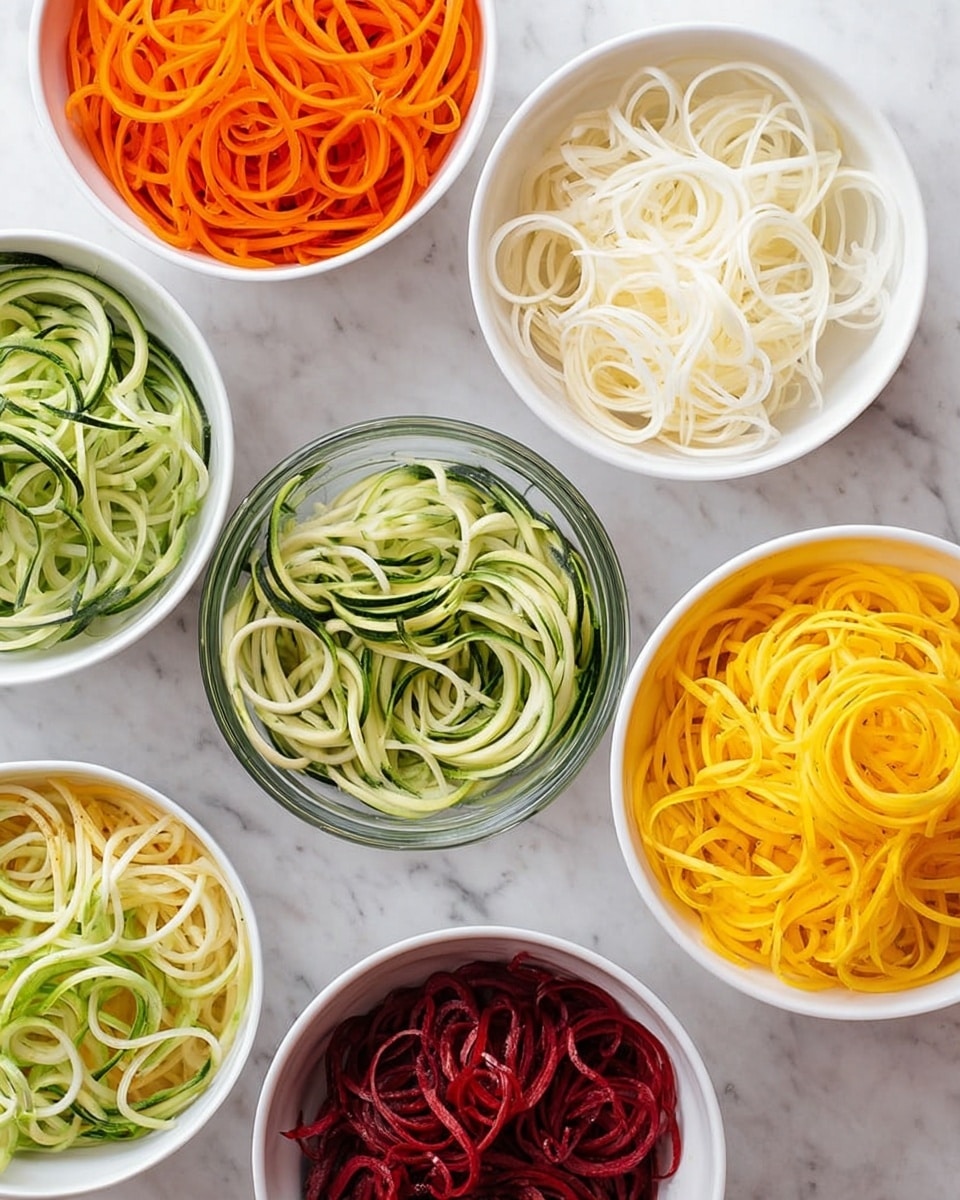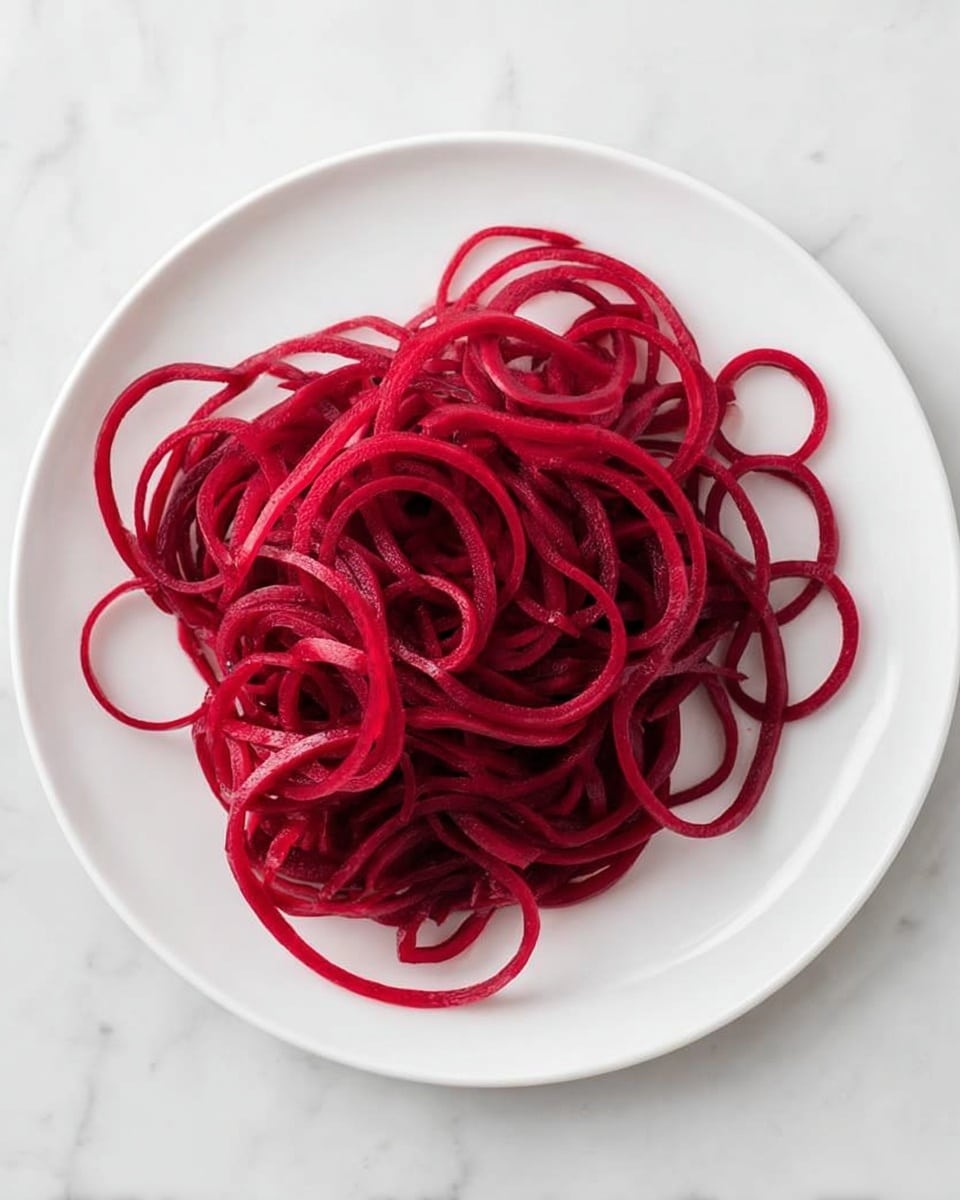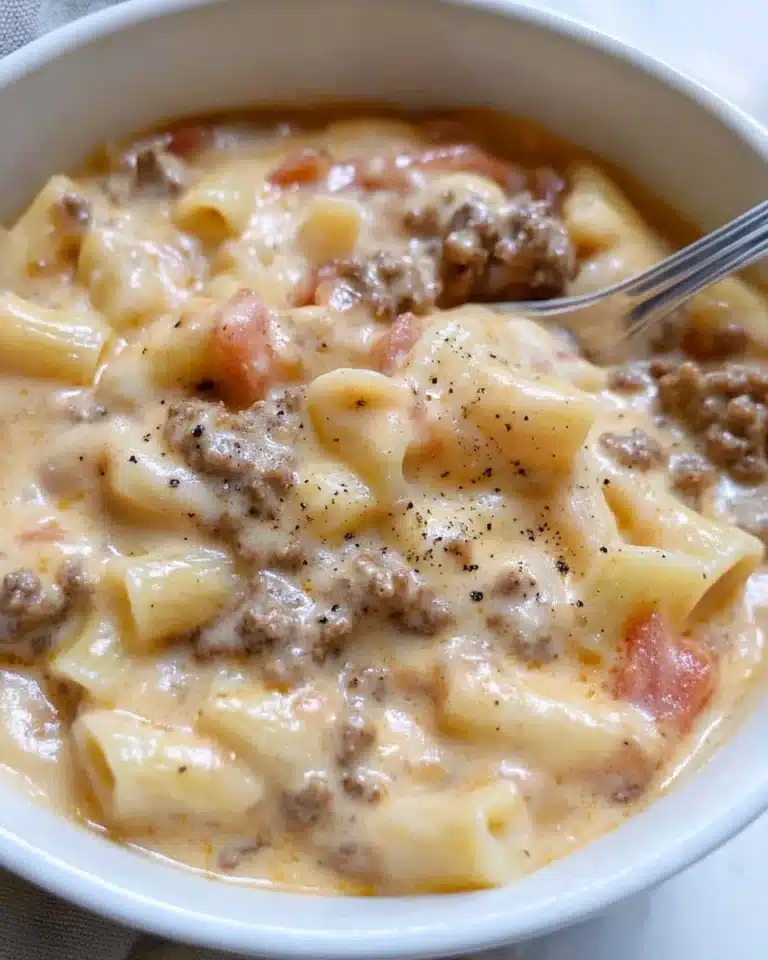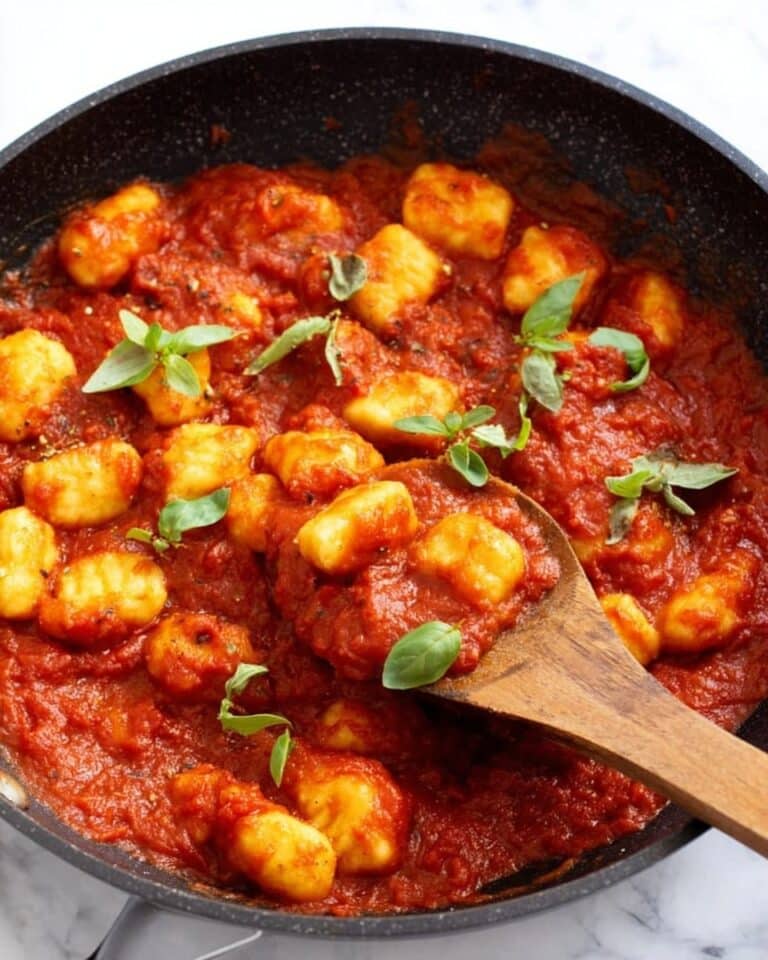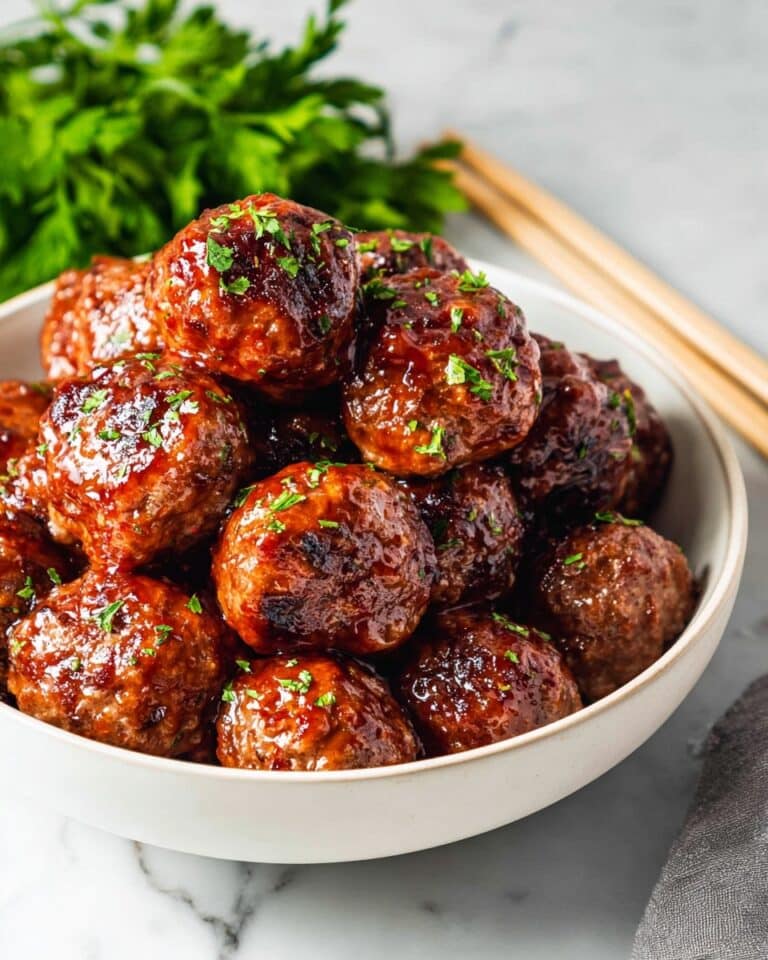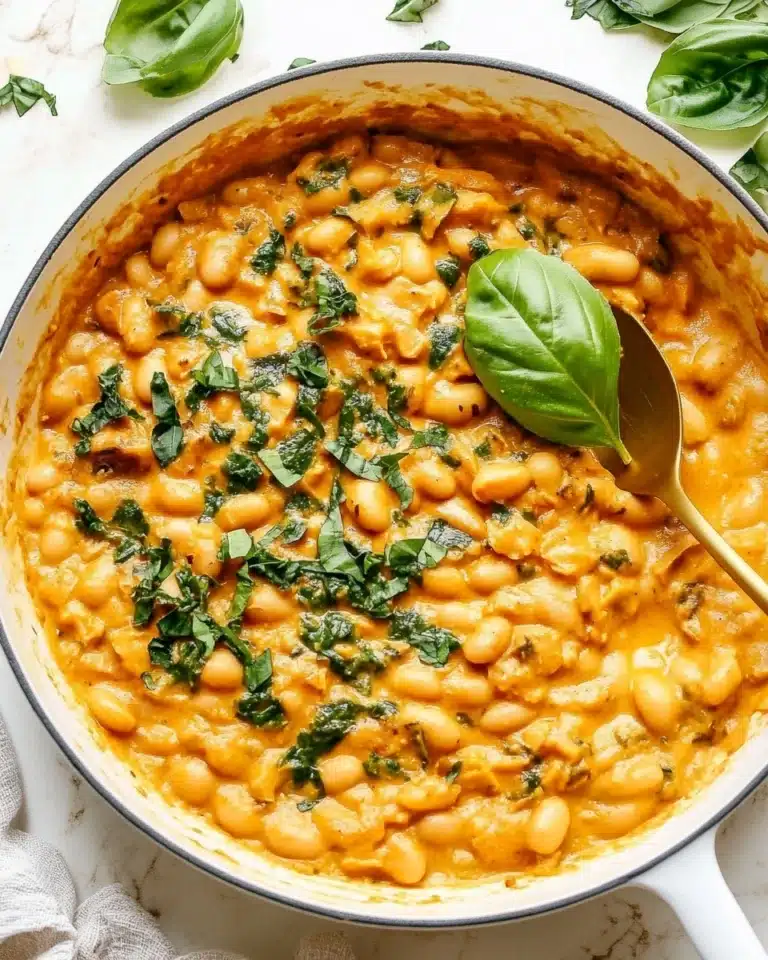If you’ve been curious about trying a vibrant, healthy twist on pasta nights, you’re in the right place. I’m excited to share my favorite method for How to Make Veggie Noodles Recipe — a colorful, fresh alternative to traditional noodles that’s as fun to make as it is delicious to eat. Whether you’re aiming to sneak more veggies into dinner or just craving something light and refreshing, this recipe will quickly become your go-to. Trust me, once you try these veggie noodles, you’ll see pasta in a whole new light!
Why You’ll Love This Recipe
- Vibrant Variety: You get to mix and match colorful veggies like zucchini, beet, and butternut squash for a feast for the eyes and palate.
- Healthy & Light: These noodles are a fantastic low-carb, gluten-free alternative to pasta that still feels indulgent.
- Quick & Easy: From peel to plate in just 10 minutes — perfect for busy weeknights or last-minute lunches.
- Flexible & Fun: You can easily swap veggies based on what’s in season or your mood, so it never gets boring!
Ingredients You’ll Need
When it comes to making veggie noodles, the freshest vegetables make all the difference. Picking firm, plump veggies with smooth skins will help you get clean, sturdy noodles that hold up well. I’ve included some simple tips for choosing the best of each so you feel confident shopping.
- Butternut squash: Choose one with a long, slender neck — it’s easier to spiralize and less seedy.
- Beet: Look for large, firm beets with smooth skin; avoid shriveled ones.
- Cucumber: A large English cucumber is perfect here — no peeling needed, and its flavor is mild.
- Carrot: Pick thick, fat carrots as they create satisfying, sturdy noodles.
- Daikon radish: Select smooth, firm roots with no soft spots for the best texture.
- Summer squash: Large yellow squashes work best and don’t need peeling.
- Kohlrabi: Pick bulbs without soft spots; save the greens for a side dish or salad.
- Sweet potato: Go for thick, firm sweet potatoes for noodles that hold their shape.
- Zucchini: Big zucchinis produce more noodles; the skin is thin enough not to peel.
Variations
I love how playful this recipe is — you can easily customize it based on your veggies, desired textures, or even the sauces you pair it with. Here are a few variations I’ve tried that you might enjoy experimenting with to make this recipe truly your own.
- Raw vs. Cooked Noodles: Sometimes I toss zucchini noodles raw with a light dressing, but other times I lightly sauté sweet potato or carrot noodles until tender for a warm meal.
- Spicy Twist: Adding a sprinkle of chili flakes or a splash of sriracha sauce when serving really wakes up the flavors — I discovered this while trying to pep up a weekday lunch.
- Herb & Nut Mix-ins: Fresh basil, toasted pine nuts, or chopped cilantro make a refreshing and crunchy finishing touch that my family always asks for.
- Veggie Swap: Feel free to swap in seasonal vegetables like purple sweet potatoes or rainbow chard noodles for even more color and nutrients.
How to Make How to Make Veggie Noodles Recipe
Step 1: Prep Your Veggies for Spiralizing
Start by washing all your veggies thoroughly. For butternut squash, cut off the thicker, seedy base and save it for soups or roasting later — I hate wasting any part! Peel the skin off harder veggies like butternut squash and sweet potatoes, while cucumber and zucchini can stay unpeeled for added color and nutrients. Remove any tough or woody ends, like the greens from kohlrabi, and set your veggies aside ready to go.
Step 2: Spiralize or Peel into Noodles
Grab your spiralizer or julienne peeler and get to work! For firmer veggies like butternut squash, beet, and sweet potato, the spiralizer is a lifesaver — it creates perfect, spaghetti-like strands. For delicate veggies such as zucchini, cucumber, or summer squash, you can use a spiralizer or a julienne peeler depending on what noodle shape you prefer. Don’t worry about peeling the skin off zucchini or summer squash; their skins are tender and tasty. If you don’t have a spiralizer, a regular vegetable peeler can still get you ribbon-shaped noodles that work beautifully in salads and sautés.
Step 3: Rinse and Drain Your Noodles
Once your veggie noodles are ready, give them a quick rinse under cold water to freshen them up and remove any excess starch or bitterness — especially for beet and daikon noodles. Then, lay them out in a colander or on clean kitchen towels to drain. This helps prevent sogginess later when you toss them in your sauce or dressing.
Step 4: Cook or Serve as Desired
This is where your creativity shines! For zucchini, cucumber, and summer squash noodles, I often serve them raw in fresh salads or with light sauces. Heartier veggies like sweet potato or butternut squash benefit from a quick sauté in olive oil just until tender – about 3-4 minutes over medium heat. Avoid overcooking or they’ll turn mushy. You can also steam or blanch as an alternative. Feel free to mix noodle types for a fun texture combo.
Pro Tips for Making How to Make Veggie Noodles Recipe
- Choose the Right Veggies: I learned choosing firm, fresh vegetables with minimal blemishes makes all the difference in noodle texture.
- Don’t Overcook: Keep cooking times short—vegetable noodles get soggy fast! A quick sauté or serving raw keeps them vibrant and crisp.
- Save Your Scraps: I always save ends and peels to make veggie stock or roast later — nothing goes to waste!
- Use a Sharp Spiralizer Blade: This helped me avoid mangled noodles and made prep so much smoother.
How to Serve How to Make Veggie Noodles Recipe
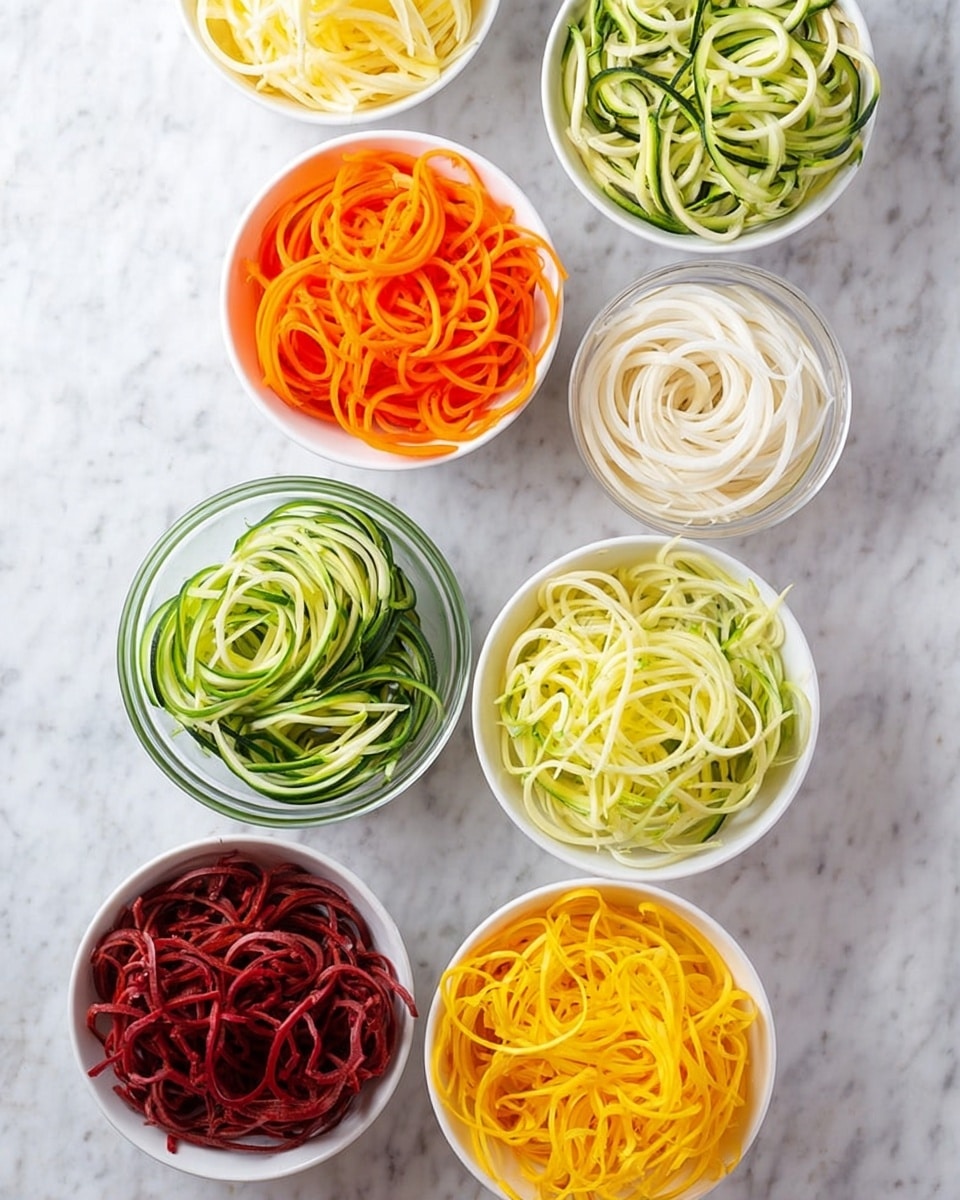
Garnishes
I love topping these veggie noodles with fresh herbs like basil, parsley, or cilantro — they bring a fragrant lift. A sprinkle of toasted nuts or seeds adds a crunchy contrast, and a squeeze of lemon juice really brightens the whole dish. For a little indulgence, shaved Parmesan or crumbled feta work wonders too!
Side Dishes
This recipe pairs really well with simple protein sides like grilled chicken, pan-seared tofu, or even a piece of fresh crusty bread to scoop up sauces. For something light, a crisp green salad or roasted vegetables complement the noodles beautifully.
Creative Ways to Present
For special occasions, I like to twirl the veggie noodles into little nests on each plate — it makes serving feel fancy but stays super easy. Another fun idea is layering different colored noodles in a glass bowl for a kaleidoscope effect that’s as Instagrammable as it is tasty. Adding edible flowers or microgreens on top is the cherry on the cake.
Make Ahead and Storage
Storing Leftovers
I find veggie noodles are best enjoyed fresh, but if you have leftovers, store them in an airtight container in the fridge for up to 2 days. To keep texture intact, I usually toss raw noodles with a little olive oil before storing to prevent sticking.
Freezing
Freezing veggie noodles isn’t my favorite method because they tend to get watery and mushy upon thawing. But if you want to freeze, I recommend blanching the sturdier noodles like sweet potato or butternut squash first, then freeze in a single layer before transferring to bags.
Reheating
When reheating, I prefer to lightly sauté leftovers in a pan over medium heat just until warmed through — this brings back a bit of that fresh texture. Avoid microwaving if you can, as it sometimes makes the noodles limp.
FAQs
-
Can I use any spiralizer for making veggie noodles?
Absolutely! Any standard spiralizer will work well for most veggies. I recommend one with multiple blade options so you can make different styles, like thin spaghetti or thicker ribbons. Just be sure it’s sharp to get clean cuts without squishing delicate vegetables.
-
Do I need to peel all the vegetables?
Not necessarily. Softer-skinned veggies like zucchini, cucumber, and summer squash can usually be spiralized with the skin on for added nutrients and color. Harder vegetables, like butternut squash and sweet potato, should be peeled for the best texture.
-
How long can veggie noodles be stored?
Veggie noodles keep best when fresh and stored in an airtight container in the refrigerator for up to 2 days. Beyond that, they may become watery or start to soften too much.
-
What are the best sauces to serve with veggie noodles?
Light sauces like pesto, avocado crema, or lemon garlic dressing are fantastic. For cooked veggie noodles, a simple tomato sauce or soy-ginger glaze works beautifully. The key is to keep sauces fresh and not too heavy to let the veggie flavors shine.
-
Can I substitute veggie noodles for regular pasta in recipes?
Yes! Veggie noodles are a versatile substitute, though cooking times and textures vary. For hearty noodles like sweet potato, a gentle sauté can mimic pasta’s softness, while zucchini noodles shine best tossed fresh with lighter sauces or quick sautés.
Final Thoughts
I absolutely love how fresh and colorful this veggie noodles recipe turns out every single time. When I first tried swapping traditional pasta for veggie noodles, I was amazed at how satisfying and flavorful it was — without feeling heavy. Plus, making it is genuinely fun, and I always feel good knowing I’m getting a rainbow of nutrients into my meal. I hope you’ll try this recipe soon and enjoy the same excitement and health benefits in your kitchen. Don’t be afraid to get creative and make it your own; I promise it’ll become a staple you’ll reach for again and again!
Print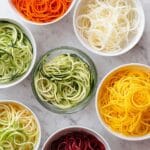
How to Make Veggie Noodles Recipe
- Prep Time: 10 min
- Cook Time: 0 min
- Total Time: 10 min
- Yield: 2 servings
- Category: Vegetable Noodles
- Method: No-Cook
- Cuisine: Vegetarian
- Diet: Vegetarian
Description
Learn how to make vibrant and healthy veggie noodles using a variety of fresh vegetables like butternut squash, beet, cucumber, carrot, and more. These veggie noodles serve as a nutritious and colorful alternative to traditional pasta, perfect for light meals or side dishes.
Ingredients
Vegetables
- 1 butternut squash
- 1 large beet
- 1 large English cucumber
- 1 large carrot
- 1 daikon radish
- 1 large yellow summer squash
- 1 kohlrabi bulb
- 1 thick sweet potato
- 1 large zucchini
Instructions
- Prepare Butternut Squash Noodles: Select a butternut squash with a long neck. Chop off the fat, seedy base and save for other uses. Peel the squash thoroughly and use a spiralizer to create noodle strands from the peeled neck.
- Make Beet Noodles: Choose a large beet, peel off its skin completely, then spiralize to make noodles.
- Prepare Cucumber Noodles: Pick a large English cucumber. You don’t need to peel it; simply spiralize or use a julienne peeler to create noodles.
- Make Carrot Noodles: Use a fat carrot, scrub it well or peel if necessary. Use a spiralizer or julienne peeler to make noodles.
- Make Daikon Radish Noodles: Peel if desired and spiralize the daikon radish to form noodles.
- Prepare Summer Squash Noodles: Select a large yellow summer squash. You can spiralize, use a julienne peeler, or a regular vegetable peeler to create thick ribbon-shaped noodles. Peeling is not necessary.
- Make Kohlrabi Noodles: Chop off the greens and save them for another recipe. Peel any nubby parts of the bulb and spiralize the remaining bulb to form noodles.
- Prepare Sweet Potato Noodles: Choose a thick sweet potato. Peel it completely and spiralize to make noodles.
- Make Zucchini Noodles: Select a large zucchini. Spiralize, julienne peel, or use a vegetable peeler to create thick ribbon noodles. Peeling the skin is optional.
Notes
- These veggie noodles are a colorful and healthy alternative to pasta.
- Use fresh, firm vegetables for the best texture and flavor.
- Save vegetable scraps like butternut squash base and kohlrabi greens for soups or sautés.
- No peeling is necessary for squashes and cucumbers unless desired.
- Veggie noodles can be served raw or lightly sautéed depending on preference.
Nutrition
- Serving Size: 1 cup veggie noodles
- Calories: 60
- Sugar: 4g
- Sodium: 40mg
- Fat: 0.5g
- Saturated Fat: 0g
- Unsaturated Fat: 0.3g
- Trans Fat: 0g
- Carbohydrates: 14g
- Fiber: 3g
- Protein: 2g
- Cholesterol: 0mg

